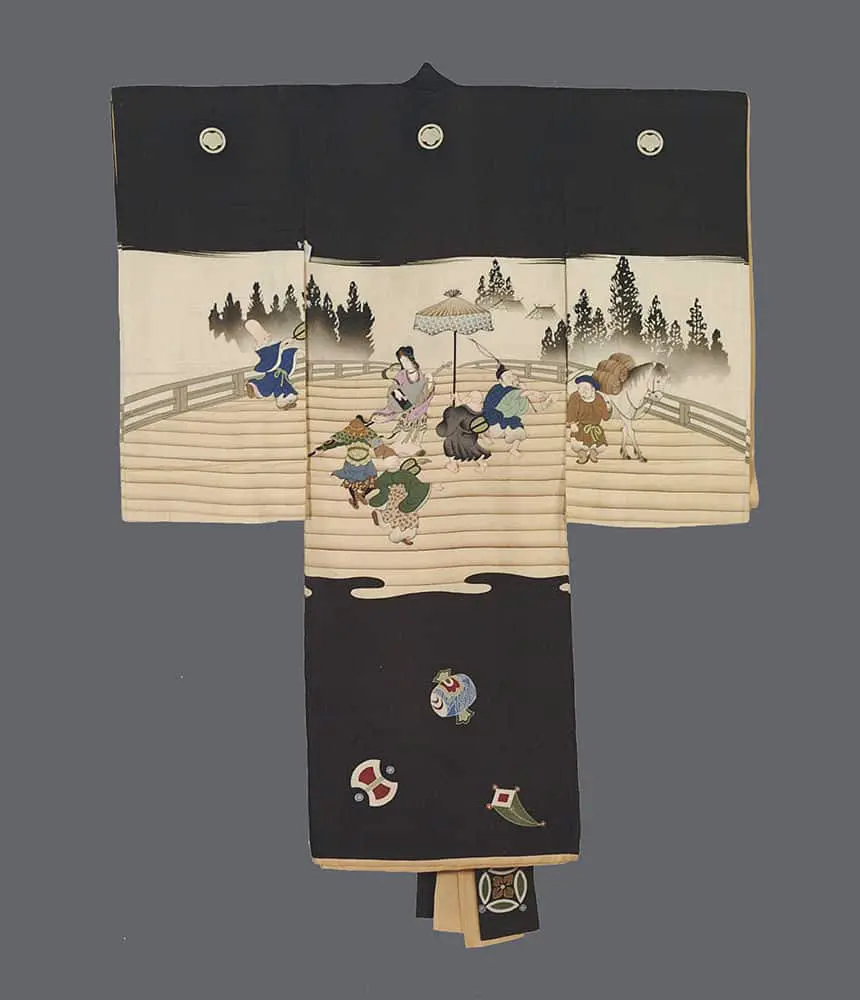This miyamairi kimono presents a remarkable tableau of the Shichifukujin (Seven Lucky Gods) rendered in the sophisticated yuzen and sumi-e painting techniques. The composition unfolds across a wooden bridge or platform set against a misty forest backdrop, creating a narrative scene that transforms the garment into a portable stage for these beloved deities. The artist has masterfully employed atmospheric perspective, with silhouetted pine trees dissolving into gray washes that evoke the ink painting traditions of classical Japanese art, while the foreground figures are rendered with clear, decisive lines and selective color application.
The iconographic program represents a fascinating synthesis of religious and folk traditions drawn from Shinto, Buddhist, and Daoist sources, reflecting Japan's syncretic spiritual landscape. Each deity is depicted with their characteristic attributes: Hotei's rotund, jovial form symbolizing contentment and abundance; Jurojin with his staff representing wisdom and longevity; Fukurokuju's distinctive elongated cranium marking him as the deity of happiness and prosperity; and the others each contributing their specific blessings of protection, knowledge, commerce, and good fortune. The inclusion of scattered amulet motifs in the lower register is indeed unconventional for miyamairi garments, suggesting either a specific regional variation or the patron's particular devotional preferences.
The artistic style demonstrates the Meiji to Taisho period's characteristic blend of traditional Japanese pictorial conventions with a more naturalistic approach to figure modeling and spatial representation. The muted palette of earth tones, blues, and grays creates a sense of dignified restraint appropriate for ceremonial wear, while the dynamic positioning of the figures across the bridge suggests movement and interaction, bringing these mythological beings into an accessible, almost genre-like setting that would have resonated with contemporary viewers familiar with popular illustrations and prints.
Measurements: 32 inches (81 cm) across the sleeves and standing at 38 inches (97 cm) in height
This artwork is featured on pages 280-283 of Ceremonial Textiles of Japan, 18th to 20th Centuries. This book, published by Yorke Antique Textiles, can be previewed or purchased on our website here.
.avif)



























